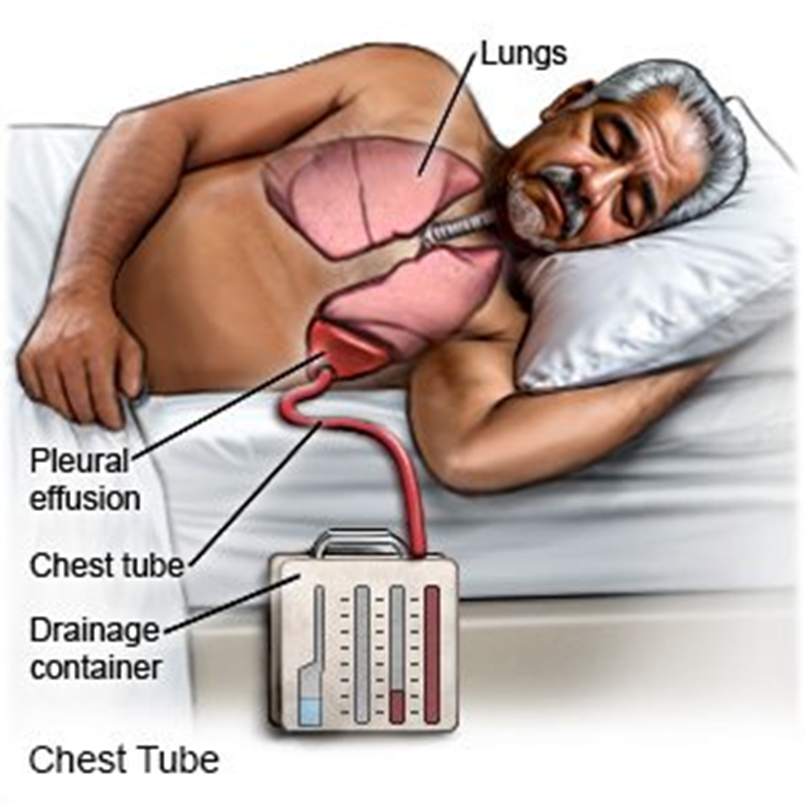A nurse is caring for a client who has Cushing’s syndrome. The nurse should recognize that which of the following are manifestations of Cushing’s syndrome? (Select all that apply)
Buffalo hump
Moon face
Hypertension
Purple striations
Tremors
Correct Answer : A,B,C,D
Choice A reason: A buffalo hump is a characteristic sign of Cushing’s syndrome. It refers to the accumulation of fat on the back of the neck and shoulders. This symptom occurs due to the excessive production of cortisol, which leads to abnormal fat distribution in the body.
Choice B reason: Moon face is another hallmark of Cushing’s syndrome. It describes the rounding and fullness of the face, which results from fat deposits. This symptom is also caused by prolonged exposure to high levels of cortisol.
Choice C reason: Hypertension, or high blood pressure, is commonly associated with Cushing’s syndrome. Cortisol increases blood pressure by enhancing the sensitivity of blood vessels to catecholamines and by promoting sodium and water retention.
Choice D reason: Purple striations, or stretch marks, are often seen in individuals with Cushing’s syndrome. These marks typically appear on the abdomen, thighs, breasts, and arms. They result from the thinning of the skin and the breakdown of collagen due to elevated cortisol levels.
Choice E reason: Tremors are not typically associated with Cushing’s syndrome. While Cushing’s syndrome can cause a variety of symptoms, tremors are more commonly linked to other conditions such as hyperthyroidism or neurological disorders.
Nursing Test Bank
Naxlex Comprehensive Predictor Exams
Related Questions
Correct Answer is C
Explanation
Choice A: Severe Hypertension
Severe hypertension can be a sign of increased intracranial pressure (ICP), but it is not typically the earliest sign. Hypertension often occurs as a compensatory mechanism to maintain cerebral perfusion pressure. While it is a significant finding, it usually follows other more immediate signs of increased ICP.
Choice B: Dilated and Nonreactive Pupils
Dilated and nonreactive pupils are a late sign of increased ICP and indicate severe brainstem compression. This finding suggests that the pressure has reached a critical level, leading to brain herniation. It is a very serious sign but not the earliest indicator of increasing ICP.
Choice C: Decreased Level of Consciousness
A decreased level of consciousness is often the earliest and most sensitive indicator of increasing ICP. Changes in consciousness can range from confusion and lethargy to complete unresponsiveness. This symptom reflects the brain’s response to increased pressure and reduced cerebral perfusion, making it a critical early sign that requires immediate attention.

Choice D: Projectile Vomiting
Projectile vomiting can occur with increased ICP due to pressure on the vomiting centers in the brainstem. However, it is not typically the earliest sign. Vomiting often accompanies other symptoms such as headache and changes in consciousness.
Correct Answer is ["B","C","G"]
Explanation
Choice A Reason:
Breath sounds diminished on auscultation indicate that there may still be fluid or air in the pleural space, suggesting that the chest tube is still needed to drain the pleural cavity. This is not an appropriate reason to discontinue a chest tube as it indicates ongoing issues that need to be resolved.
Choice B Reason:
Improved respiratory status is a key indicator that the chest tube has successfully resolved the underlying issue, such as a pneumothorax or pleural effusion. When the patient shows signs of stable and improved breathing, it suggests that the chest tube has served its purpose and can be safely removed.

Choice C Reason:
Symmetrical rise and fall of the chest during respiration indicate that both lungs are expanding and contracting normally. This symmetry is a sign that the pleural space is no longer compromised, making it an appropriate reason to remove the chest tube.
Choice D Reason:
Oxygen saturation at least 90% is a general indicator of adequate oxygenation but does not specifically address the condition of the pleural space. While important, it is not a direct reason to discontinue a chest tube without other supporting signs.
Choice E Reason:
Continuous bubbling in the water seal chamber indicates an ongoing air leak, which means that the chest tube is still necessary to evacuate air from the pleural space. This is not an appropriate reason to remove the chest tube.
Choice F Reason:
An asymmetrical chest on inspiration and expiration suggests that there is still an issue with lung expansion, possibly due to fluid or air in the pleural space. This condition requires the chest tube to remain in place until resolved.
Choice G Reason:
Bilateral breath sounds clear on auscultation indicate that both lungs are free of fluid and air, and are functioning normally. This is a strong indicator that the chest tube has achieved its purpose and can be safely removed.
Whether you are a student looking to ace your exams or a practicing nurse seeking to enhance your expertise , our nursing education contents will empower you with the confidence and competence to make a difference in the lives of patients and become a respected leader in the healthcare field.
Visit Naxlex, invest in your future and unlock endless possibilities with our unparalleled nursing education contents today
Report Wrong Answer on the Current Question
Do you disagree with the answer? If yes, what is your expected answer? Explain.
Kindly be descriptive with the issue you are facing.
